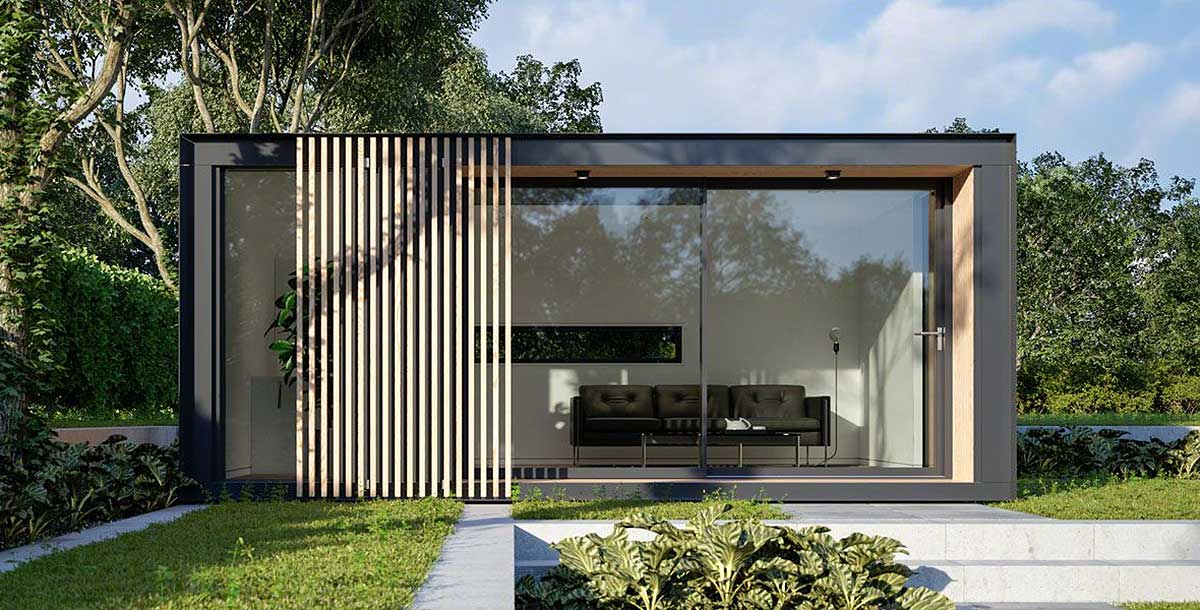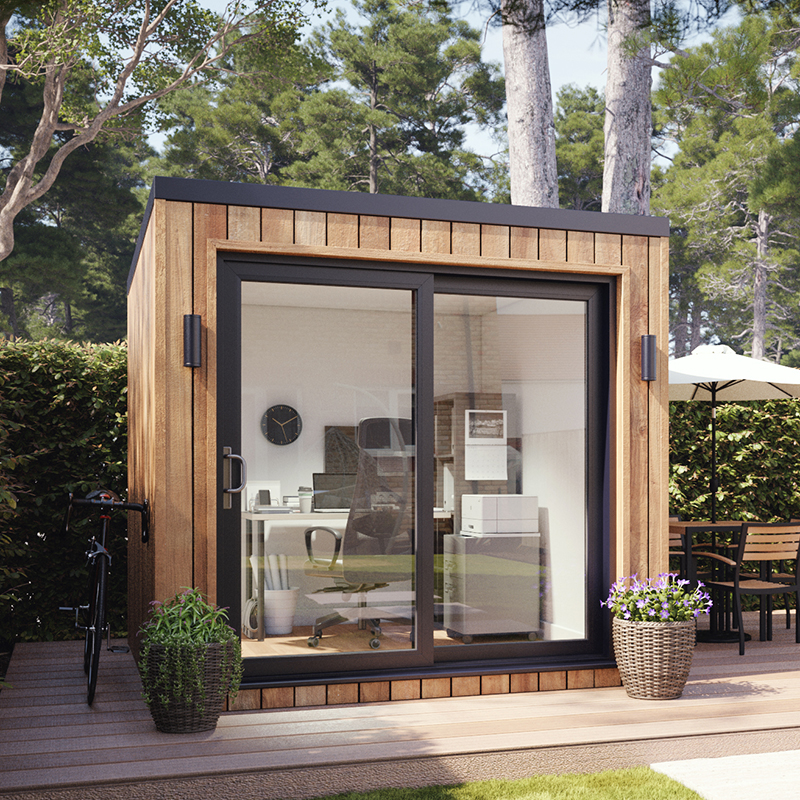Certain restrictions have been put in place to protect the appearance and character within conservation zones. This includes garden rooms, conservatories or outhouses. These are the most important factors to consider when planning permission is needed in conservation zones:
Any building or extension which would otherwise be subject to allowed development rights might require planning permission in a conservation area. This includes sheds, garden rooms, and other outbuildings.
Size and Scale:
All structures of any size can require approval for planning if they are deemed to affect the character of the conservation area. The dimensions and the size of extensions or new constructions are more tightly controlled than those that are in zones with no designation.
The location within the property:
Planning permission is required for any buildings or extensions that are located on the front and side of a house. Rear of buildings can be required if they are is visible from public spaces or if it affects the overall appearance of the property.
Design and materials:
It is essential to choose the right materials and designs compatible with the historic or architectural value of the region. Material selection for any extension or building has to be compatible with the historical or architectural significance of the area. Planning permission will be required to make sure these standards are met.
Demolition:
To ensure that any modifications to the area aren't unnatural to the area The planning permit is required for the demolition of parts of existing structures, such as outbuildings or boundary walls.
Height Restrictions
In conservation areas, there are higher height restrictions in conservation areas. Planning approval is required for any structure that exceeds 2.5 meters (especially when it's less than 2 meters from the boundary).
Effect on the surroundings
Planning permission is required if the proposed extension or building is likely to impact the appearance or visual setting of the Conservation Area and also the views that pass through and exit the Conservation Area.
Building use:
If an outbuilding or garden is within the limits of size however, it might still require planning permission because of its intended purpose (e.g. as a studio, home office or habitable room).
The following are extensions and modifications:
In general, extensions that alter the look of the building or surpass certain size or volume limitations will require planning approval. This applies to conservatories and other significant changes.
Curtilage Structures:
The structures within the curtilage of a listed building in a conservation zone always require planning permission. This includes any new outbuildings, extensions or changes.
Protection of trees
Conservation areas have trees that are often protected. You may also need to get additional approvals if your construction project affects trees.
Local Authority Guidelines
Local planning authorities can establish rules and regulations specific to each conservation zone. These can include detailed guidelines on what is permissible and not, tailored for the specific nature of the area.
Planning permission in Conservation Areas is based on a thorough assessment of how the proposed gardenroom outhouse, conservatory, outhouse, or garden office would have an impact on the architectural or historical character of the conservation area. It is crucial to talk with your local authority early on when you are making plans for your plan. This will ensure it is in line with the relevant guidelines and regulations. See the top rated garden rooms near me for blog recommendations including conservatories and garden rooms, 4m x 4m garden room, ground screws vs concrete, small garden office, small garden office, garden rooms, garden room vs extension, garden room planning permission, armoured cable for garden room, myouthouse and more.

What Is The Planning Permission Required For Garden Rooms Etc.?
Special considerations and regulations are required when creating conservatories, garden rooms or outhouses on the premises of a listed building. These are the most important considerations when preparing such projects.
In most cases the case, any modification, extension or new construction within the immediate vicinity of a listed building requires both planning and listed building consent. These are because any changes could impact the character and special significance of the property listed.
Impact on Historic Character
Planning applications are required for any structure or extension that could change the character of the property listed or its setting. This includes outbuildings as well as gardens rooms.
Design and Materials
The design and materials should be reflective of the historical and architectural significance of the building. It is possible that this would necessitate the use and design of materials from the past. This will also require approval for planning.
Distance from the listed Building
The impact of any new structure close to a heritage building are scrutinized to determine if they detract from its character. If they don't affect the building’s character Planning permission is required to be obtained.
Size and Scale
The dimensions and size of the garden room, conservatory, or extension must be proportionate and in harmony with the listed building. The bigger structures will require more thorough analysis and planning approval.
The location on the property
The position of your new structure (whether in front, on the side, or in the rear of the building) will determine whether you need permission to plan. Visible or key locations that have an impact on the building will require a closer examination.
Internal structural changes:
If the new structure is separate from the old building and any modifications that are made to it (such as adding new access points), will also need planning and listed building permission.
Conservation Area Overlap
Additional restrictions may apply for listed buildings located in an area designated as a conservation area. Planning permission is required to ensure compliance with listed buildings and conservation area regulations.
Use of the Building
Planning permission is often needed in relation to the intended use of the garden room or any other outbuilding, will be used for. The use of an outbuilding or a garden area which implies a significant modification to the property like a residential unit or commercial space, is the subject of greater scrutiny.
Structure:
Planning approval is required for any work which could impact the structural integrity or the structure. This ensures that the old and new structures are seamless.
Local Authority Guidelines
Local authorities usually provide specific guidelines to listed buildings which outline the different types of construction as well as modifications that can be permitted. Planning permission is required to ensure that these guidelines are followed.
Professional Assessments
Plans for the renovation of listed buildings usually require thorough assessments by conservation professionals. These assessments help determine the feasibility of proposed changes and support the planning permission application.
To summarise, planning consent and listed building approvals are almost always needed when building gardenrooms, conservatories outhouses, office buildings, or extensions that are associated with an approved building. Consulting with your local planning authority and heritage professionals early in the planning process is essential to ensure compliance with all relevant regulations and to preserve the historical and architectural integrity of your property. Have a look at the best rules for building an outhouse for more tips including garden rooms brookmans park, what size garden room without planning permission, ground screws vs concrete base, how to get power to a garden room, how to get power to a garden room, composite garden rooms, what size garden room without planning permission, Tring garden rooms, what size garden room without planning permission, garden outhouse and more.

What Planning Permission Is Required For Garden Rooms, Etc. On Agricultural Lands?
There are some restrictions and conditions to obtain planning permission for the construction of conservatories, outhouses, or garden offices on land that is agricultural. Here are the key elements Change of Use:
The land that is designated as agriculturally is used for farming and similar activities. Planning permission is typically required to change the land's use from agricultural to garden or residential structures. This is because it requires an alteration in its use as a farm.
Permitted Development Rights:
Agricultural land often has different development rights that are permitted compared to residential land. In some cases agricultural structures can be built without planning approval. These rights, however, are only applicable to agricultural structures.
Size and Scale
The proposed dimensions and size of the structure will impact whether planning permission is required. Larger structures or encompass a large amount of space are more likely to require permission.
Impact on Agricultural Use:
If the new structure decreases the area of land that is suitable for livestock or crops the planning permission could be needed.
Green Belt Land:
Additionally, there are restrictions in place when the property is designated as Green Belt. These restrictions are designed to stop urban sprawl and preserve open space. Planning permission is generally required for any new construction on Green Belt land.
Design and Appearance
The design and appearance must reflect the rural character in the region. The permission for planning will guarantee that the building doesn't impact the natural landscape or visual amenity.
Environmental Impact:
It is essential to consider the environmental impact prior to construction on land that is agricultural. A study of the environment may be required in order to get planning approval to ensure any new construction will not cause harm to wildlife habitats or local ecosystems.
Near Existing Buildings
The distance between the garden office and the existing agricultural structures could impact planning requirements. Construction structures that are located close to farm buildings are treated differently than those on open fields.
Access and Infrastructure:
You need to take into account the impact on infrastructure, for example, roads, water supply, and waste management. If you apply for planning permission, the city will evaluate whether the infrastructure is able to support the proposed building.
Use Class Order
Planning law has defined specific land use classes. Planning permission is often required to change the usage class of a building to one that isn't under the agricultural category.
Local Planning Policies
Local planning authorities have specific policies regarding agriculture-related land. Local planning authorities have specific policies for land used for agriculture.
National Planning Policy Framework
In the UK, National Planning Policy Framework (NPPF) provides guidelines on how land can be best developed and used. Permission to build structures on land used for agriculture will be assessed in light of the NPPF that emphasizes sustainable development as well as the protection of rural land.
In summary, a planning permit is needed for the construction of greenhouses, garden rooms, outhouses and garden offices or extensions to agricultural land. This permit is needed in order to make sure that uses of land are altered and that they are in compliance with national and local policies. To find out the exact requirements and to obtain the necessary approvals, it is crucial to consult local planning authorities. Have a look at the best what is the maximum height for a garden room for blog recommendations including outhouse buildings, out house for garden, insulated garden buildings, garden room heater, outhouse buildings, garden rooms brookmans park, garden room planning permission, how to lay decking on soil, 4m x 4m garden room, garden rooms and more.
